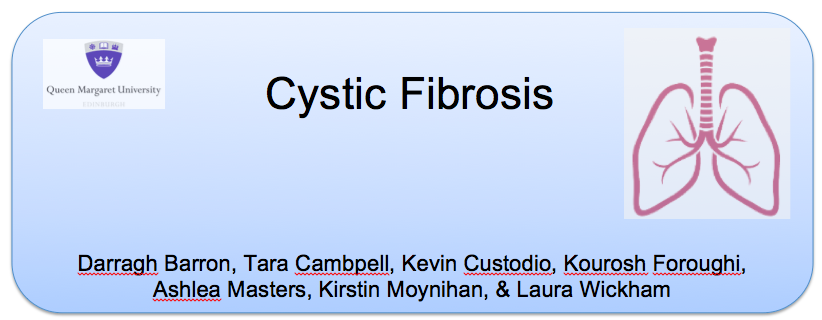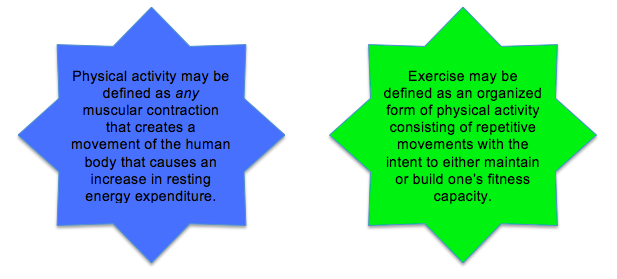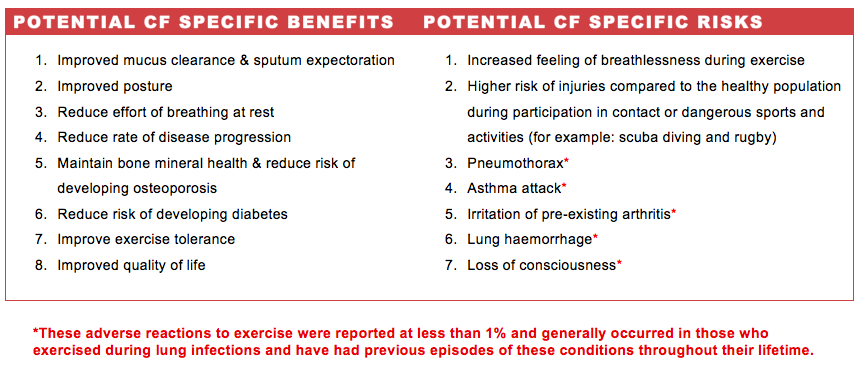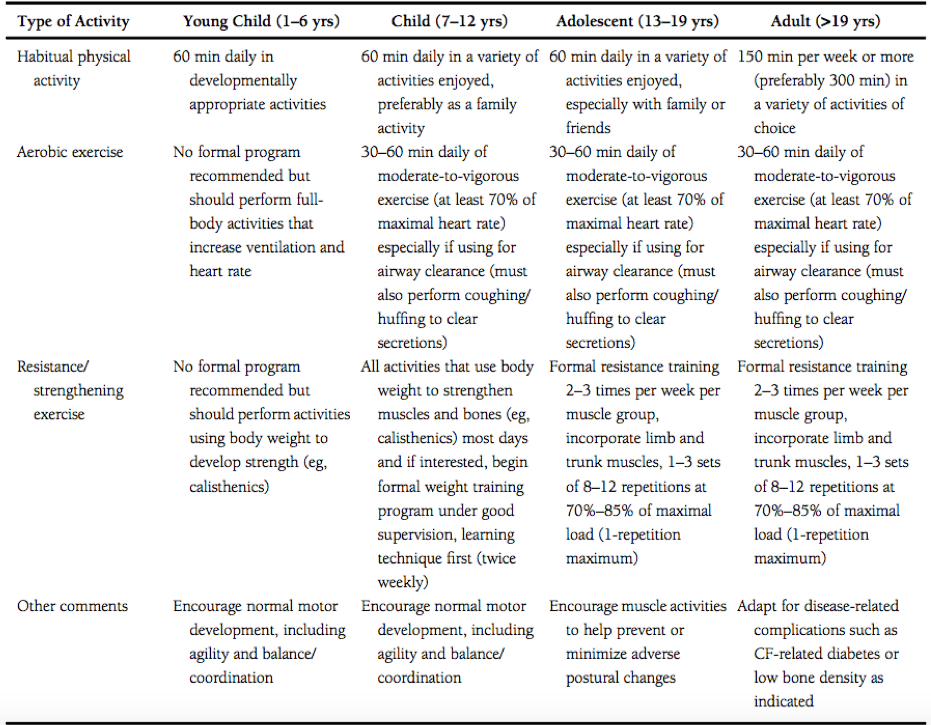Growing up With Cystic Fibrosis
- Please do not edit unless you are involved in this project, but please come back in the near future to check out new information!!
- If you would like to get involved in this project and earn accreditation for your contributions, please get in touch!
Original Editor - Your name will be added here if you created the original content for this page.
Top Contributors - Laura Midori Wickham, Kim Jackson, Vidya Acharya, 127.0.0.1, Rachael Lowe, Michelle Lee, Naomi O'Reilly, WikiSysop and Adam Vallely Farrell
WELCOME[edit | edit source]
Introduction[edit | edit source]
Welcome to our information page for all people caring for individuals living with cystic fibrosis (CF). As we live in a world of technology, there are many CF websites available for public access on the Internet. Thus, our page is designed to build upon previous resources available and condense valuable information through our own critical analysis. It is our objective to provide parents and carers with a learning resource and developmental tool to ease concerns. We aim to achieve this through discussions of six important aspects of living with CF, thereby promoting self-efficacy towards assisting in the implementation of necessary changes or provide continued support.
Our mission is to advance the knowledge and participation among all readers to be well informed to assist individuals living with cystic fibrosis.
Our vision is that all readers will be confident....
Please feel free to click on the video below to become familiar with the content our webpage has to offer and to learn how to navigate the site.
Video to come...
Learning Outcomes[edit | edit source]
After exploring this wiki page, the reader should be able to:
- Review evidence of new and emerging treatments and or management of people with CF
- Analyze the physiotherapist’s role through the transition from paediatric to adult services for individuals with CF - good depth
- Gain insight on managing and caring for people with CF
- To accurately justify and support the use of current physiotherapy treatments and management techniques for people who suffer from cystic fibrosis.
- Better understand your condition (CF), how to manage it and how others can help you.
- Compare the research substantiating new scientific evidence and treatments available in the paediatric cystic fibrosis field
- Critically analyse the research supporting new and emerging scientific evidence and treatment available for patients with cystic fibrosis
- Cope, aid and problem solve emotional and psychological problems themselves or their children/patients may have as a result of living with cystic fibrosis.
- Identify exercises to develop physical activity plans appropriate for the individual’s level of abilities.
PATHOPHYSIOLOGY OF CYSTIC FIBROSIS[edit | edit source]
K.F's content to come...
Check Point: Try these self-assessment questions below[edit | edit source]
EMOTIONAL AND PSYCHOLOGICAL IMPACT[edit | edit source]
K.C's info to come...
Check Point: Try these self-assessment questions below[edit | edit source]
PHYSIOTHERAPY TREATMENTS[edit | edit source]
T.C's info to come...
Check Point: Try these self-assessment questions below[edit | edit source]
EXERCISE[edit | edit source]
It is important to understand that not all physical activity is considered exercise. Be aware of the difference between exercise and physical activity. We encourage you to make a conscious effort to engage in planned activities regularly to become an exerciser!
Benefits and Risks[edit | edit source]
All exercisers should be aware of the benefits and risks involved in their leisure-time physical activity in order to self-motivate and pre-plan for known dangers. Individuals with CF are particularly vulnerable in respect to their reduced pulmonary function and we suggest adopting a preventative strategy, such as supervision and emergency protocols.
In addition to the benefits outlined specifically for those with CF, universal exercise benefits are applicable. For instance, exercise has been shown to generate positive effects on mood and lowers anxiety. Research also tells us that good experiences of physical activity can promote self-efficacy thereby increasing one’s confidence. All of which are psychological benefits that those living with CF may enjoy to experience the same as their healthy peers.
Exercise Prescription[edit | edit source]
Recently, there has been a significant amount of research regarding the use of exercise as “medicine” to benefit individuals living with cystic fibrosis. Such studies are important for determining the physical capacity at which these individuals are capable of enduring. Furthermore, an accumulation and examination of the results allows for clinicians to determine appropriate guidelines specifically designed for individuals with cystic fibrosis.
Swisher et al. developed specific exercise prescription for individuals of all ages living with cystic fibrosis, which can be viewed in the table below. It is however important to note that although these guidelines were developed by exercise and medical professionals, the onus is on the individual and their supportive team to adapt the prescription to fit the needs, capabilities and safety of the person performing the activity.
Exercise is often prescribed as a combined treatment for CF with traditional respiratory physiotherapy techniques because movements are able to affect the physiological function of the body. For example, the movement of the body during exercise may help to condition the muscles thereby maintaining proper posture prevent curvatures in the spine that can ultimately lead to compression of the torso, which affects the ability to expand the chest during inhalation. Schindel et al. examined this idea in detail with a gold standard study design, whereby the research suggests that maintaining posture through mobility, stretching and aerobic exercise can positively affect lung function, particularly for those with cystic fibrosis. Furthermore, Pedersen and Saltin explain that the movements produced by exercise can stimulate optimal function of the mucociliary transport system within the lungs to aid in easier clearance of excess mucus due to the disease. With less mucus in the lungs there may be less chance of chest infections as well as improved ventilation experienced during normal breathing.
It seems that half of the battle to exercising is making it fun and enjoyable. The ability to choose the type of activity is one way to give individuals with CF autonomy in their life and leads to greater personal satisfaction, confidence and adherence (Orenstein & Higgins, 2005). The is especially important to implement early in life because it can help the individual to adopt this behaviour as a long term healthy habit and even encourage continuance throughout one’s life.
Check Point: Try these self-assessment questions below[edit | edit source]
EMERGING RESEARCH[edit | edit source]
A.M's info to come...
SELF-MANAGEMENT[edit | edit source]
D.B's info to come...
ACADEMIC INSTITUTION INVOLVEMENT[edit | edit source]
Communication
[edit | edit source]
Infection Risk
[edit | edit source]
Top tips from parents[edit | edit source]
TRANSITION FROM PAEDIATRIC TO ADULT CARE[edit | edit source]
Quotes from physio's to come...
CONCLUSION[edit | edit source]
Planning for the Future[edit | edit source]
Recent Related Research (from Pubmed)[edit | edit source]
Extension:RSS -- Error: Not a valid URL: Feed goes here!!|charset=UTF-8|short|max=10
REFERENCES[edit | edit source]
References will automatically be added here, see adding references tutorial.










